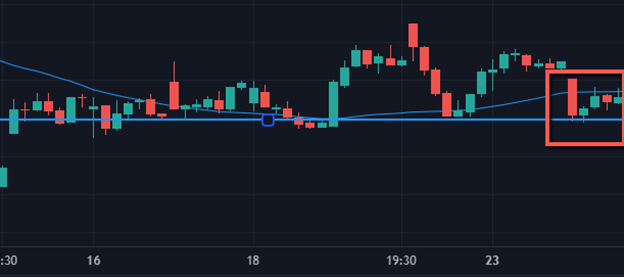Time and Sales: What It Is, Where to Find It and How to Use It

Let us know what you think! Follow us on Facebook and Twitter! Facebook Twitter
Why You Need to Pay Attention to Rho

Let us know what you think! Follow us on Facebook and Twitter! Facebook Twitter
Using “Price Slices” to Manage Risk

Let us know what you think! Follow us on Facebook and Twitter! Facebook Twitter
A Message from Dan

Let us know what you think! Follow us on Facebook and Twitter! Facebook Twitter
Where to Find and How to Use Market Depth

Let us know what you think! Follow us on Facebook and Twitter! Facebook Twitter
Life in the Fast Lane

It’s perhaps one of the greatest guitar riffs in the history of rock and roll. You know the one. The little ditty that intros and is intermittently revisited throughout the Eagles’ hit “Life in the Fast Lane.” (And, yes. I realize you’ll now have this earworm running through your head for the next three hours. […]
Options Liquidity and Volatility

Let us know what you think! Follow us on Facebook and Twitter! Facebook Twitter
Options Ninja Trick: Delta vs. Theta

Let us know what you think! Follow us on Facebook and Twitter! Facebook Twitter
Yes. You Can Find Arbitrage Opportunities in This Market!

Let us know what you think! Follow us on Facebook and Twitter! Facebook Twitter
How to Trade RSI Divergences

The MTM Trading Plan Checklist: Post Mortem

The MTM Trading Plan Checklist: Exits and Adjustments

Market Timing Is Important for Options Trading

Market timing is often defined as moving money in and out of the market or switching into other asset classes. But is can also mean timing your entry correctly. That is what I want to talk about here. But let’s be honest, as option swing traders (generally in the trade for 2 to 5 days), […]
The MTM Trading Plan Checklist: Trade Execution

Get your free 5 strategies Checklist
The MTM Trading Plan Checklist: Forecasting & Modeling

The MTM Trading Plan Checklist: Trade Analysis

Level Heads Prevail

Why Not to Work on Vacation

I’m taking some time off on what I’ll call “a well-deserved vacation.” But I wanted to share this blog with you, well, while I’m on vacation. When I was a kid, my family never really went anywhere. There was one time my grandfather took all the grandkids to Disney World. Other than that, we pretty […]
More Downside: Now What?

Fed Announcement: Now We’re Talkin’

This Is Where Twitter Stock Is Heading









